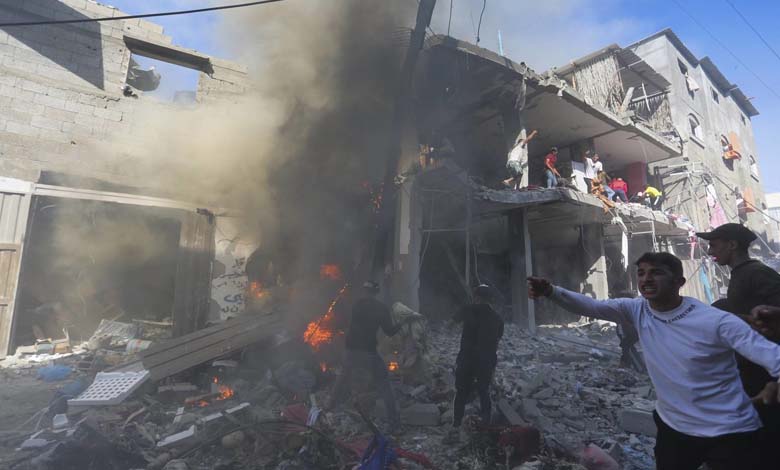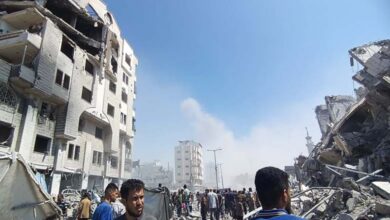Gaza Under Fire, Famine, and the Unknown… A Disaster Arising from the Ashes

Moans emerge from the rubble left by Israeli strikes on areas struggling with famine amidst the impasse of a ceasefire in the Gaza Strip.
In this context, the world faced a recurring nightmare last night, with deaths and injuries from Israeli bombing of two UNRWA-run shelter schools in the Shati refugee camp and Daraj neighborhood in Gaza.
Difficult scenes of rescuing the dead and injured recalled similar Israeli bombings in recent months that also targeted a school, creating a humanitarian disaster that sparked global outrage.
The Israeli army acknowledged its responsibility for the raids on the Shati camp, claiming it had bombed buildings used by Hamas.
In general, press reports indicated that 15 Palestinians were killed in three raids conducted by Israeli forces last night in different areas of Gaza, with others still trapped under the rubble.
An investigation by the AFP with several international media outlets, published today, suggested that Israeli tank fire hit the AFP office in Gaza, causing significant damage on November 2, 2023.
The Israeli army had denied in November targeting the building housing the AFP office in Gaza and reiterated this position in June, stating that an internal investigation was underway.
In contrast, Israeli Chief of Staff Herzi Halevi said that his country was approaching a decisive point in undermining the capabilities of Hamas‘s Rafah brigade.
Halevi stated during an assessment of the situation in Rafah with the southern command that the army, by controlling the Philadelphi route, had cut off Hamas‘s lifeline.
Israeli attacks are increasing amidst unprecedented humanitarian suffering in Gaza, and the ceasefire negotiations are at a standstill, despite US President Joe Biden announcing a three-phase initiative.
Humanitarian Disaster
Humanitarian institutions have warned of a severe escalation in famine in the sector in general and in the governorates of Gaza and the north in particular, due to the halt in the entry of aid, food, and medicine into the besieged sector.
The United Nations says the specter of famine “grows day by day,” warning that the number of deaths due to hunger could rise, especially among children who are directly threatened by malnutrition.
Two days ago, the Ministry of Health in Gaza announced detecting cases of food poisoning among displaced people in Beit Lahia, in the north of the sector, after they consumed expired food.
UNICEF, citing its partners working on the ground, reported that one in three children in northern Gaza suffers from “acute malnutrition or wasting.”
About two weeks ago, UN Under-Secretary-General for Humanitarian Affairs Martin Griffiths predicted that half of Gaza’s population would face death and famine by mid-July unless aid access is allowed.
According to UN figures, in May, an average of 97 aid trucks entered Gaza daily, a 42% decrease from April.
In the first two weeks of this month, the number of trucks fell again to 89, putting the residents of Gaza at the heart of a humanitarian disaster.












